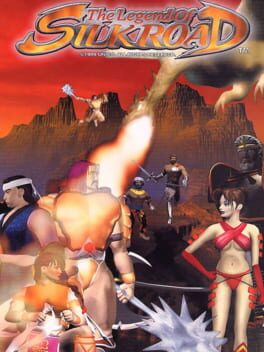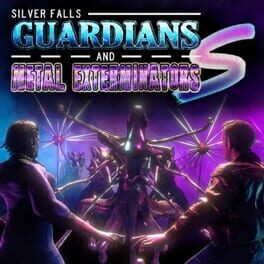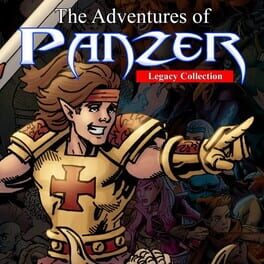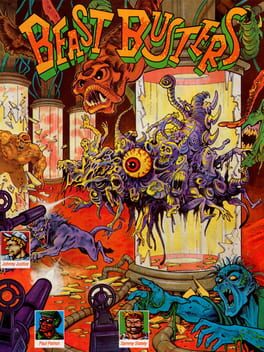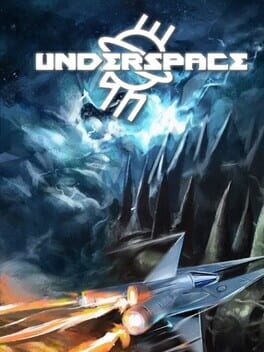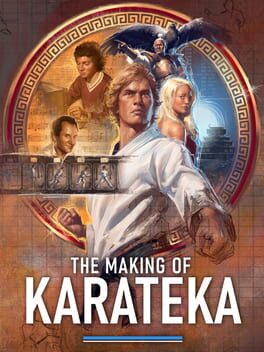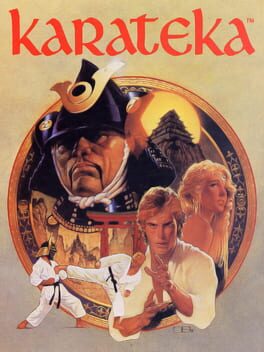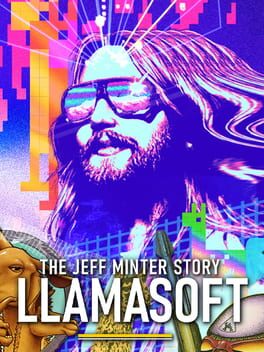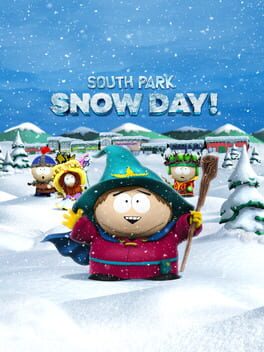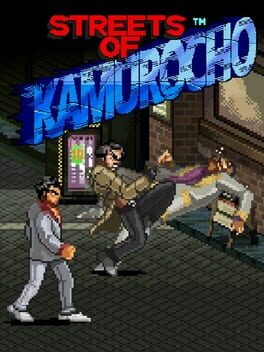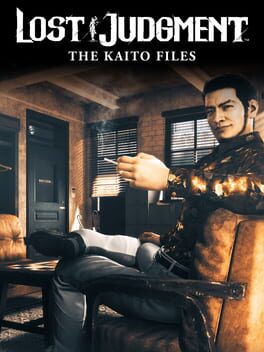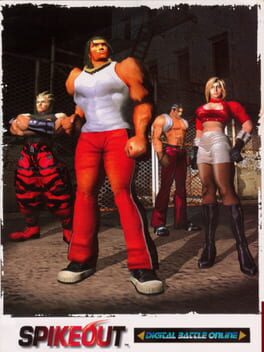ScrambledPawn
As far as late 90s beat-em-ups go, this really is a pretty miserable experience. The graphics are about old-school Runescape levels of CGI and the gameplay is rigged to be as much of a monotonous quarter-muncher as humanly possible.
In fact about as much as it reinvents the wheel actually is its worst detriment: the block system. Late-game bosses block to the point that in some cases it genuinely feels like the only way you can hit them is dying, giving them a ludicrous amount of "continue" damage and doing a meagre amount of excess with the level 1 magic stocks a new life gives you, only for them to block everything once again and take you out in three hits. It's about as fun as it sounds.
In fact about as much as it reinvents the wheel actually is its worst detriment: the block system. Late-game bosses block to the point that in some cases it genuinely feels like the only way you can hit them is dying, giving them a ludicrous amount of "continue" damage and doing a meagre amount of excess with the level 1 magic stocks a new life gives you, only for them to block everything once again and take you out in three hits. It's about as fun as it sounds.
2024
This is a surprising amount of fun and has had me hooked for a good five days now; there's genuinely a lot to do on the daily checklist and, even without money, you can genuinely feel your character gets stronger in real time.
Then today's event came out and, attached to it, is an active incentive to spend money that isn't just consumbales that level up specific areas of a character for min-maxing. This is, for the next 48 hours, a wheel that gives you an entirely RNG multiplier on real money you invest in it as cashback in virtual currency.
I just watched a guy spend 50 euros on this wheel in real time, get 3 times his money back as payout, spend 90% of it on hammers to raise his power level by 2-3 MILLION, brag about it in the world chat, spend 5 minutes in chat with the number 1 in server (a terminally online user who he's still 1 million away - each stat level up costs exponentially more than the previous one - from despite just spending the equivalent of 150 EUROS, imagine how much money this guy spends for the ego boost to stay number 1) fellating each other, then spending the remaining money on a limited event mount (that is usually a 0.15% pull on an another RNG wheel) so he can then post the stats of it in the same chat for ass pats for a secondary fellating endorphin session.
Good game if you're able to switch off from any competitive play and admit you're never getting in the top 50 if you don't have 50-150 euros lying around every single season. I've been dropping 99 cents here and there just for the spirit of the whole thing (3 times, mostly on little frivolous packs that give an extra dungeon key for example) but I think this puts me off even doing that now unfortunately.
Oh, also conversion isn't calculated based on currency either, so expect to spend more if your currency is stronger and less if it's weaker than the dollar. It's frustrating because some of these gacha games are genuinely fun to the point where they do get pretty addictive, but they really only serve to stimulate the primitive conditioning to be the best at something and that's where they achieve their predatory success - from people like the little 50 euro hero of my story.
Then today's event came out and, attached to it, is an active incentive to spend money that isn't just consumbales that level up specific areas of a character for min-maxing. This is, for the next 48 hours, a wheel that gives you an entirely RNG multiplier on real money you invest in it as cashback in virtual currency.
I just watched a guy spend 50 euros on this wheel in real time, get 3 times his money back as payout, spend 90% of it on hammers to raise his power level by 2-3 MILLION, brag about it in the world chat, spend 5 minutes in chat with the number 1 in server (a terminally online user who he's still 1 million away - each stat level up costs exponentially more than the previous one - from despite just spending the equivalent of 150 EUROS, imagine how much money this guy spends for the ego boost to stay number 1) fellating each other, then spending the remaining money on a limited event mount (that is usually a 0.15% pull on an another RNG wheel) so he can then post the stats of it in the same chat for ass pats for a secondary fellating endorphin session.
Good game if you're able to switch off from any competitive play and admit you're never getting in the top 50 if you don't have 50-150 euros lying around every single season. I've been dropping 99 cents here and there just for the spirit of the whole thing (3 times, mostly on little frivolous packs that give an extra dungeon key for example) but I think this puts me off even doing that now unfortunately.
Oh, also conversion isn't calculated based on currency either, so expect to spend more if your currency is stronger and less if it's weaker than the dollar. It's frustrating because some of these gacha games are genuinely fun to the point where they do get pretty addictive, but they really only serve to stimulate the primitive conditioning to be the best at something and that's where they achieve their predatory success - from people like the little 50 euro hero of my story.
I truly don't know where to begin with this one; it seems like a roguelike on the surface but it really brings jank to a whole new level.
I've seen videos praise this game like it's the secomd coming of indie Christ and it genuinely made me feel like it's my fault to the point where I rebooted the game and gave it an honest hour. I'm serious - one review that made me really want to give this game an even shake REALLY seemed to be a fan, going in great detail about the the "chained-DLC" gimmick the developer seems to be about as well as his own perceived intuition about indie sensibilities, all while the footage showed him getting his ass beat while he inched further on the dogshit menus.
There is nothing here to even satiate the retro enthusiast. You want retro-inspired wave-based combat? It already exists in much stronger measure. You want 2024 indie-stink that's actually fun? You got that with Black Gunner Wukong. It says a LOT when the most fun for me to be had with a game sits in its Tiger Electronics minigames.
I'm going to assume this is developer loyalty thing and that whoever made this is releasing the exact kind of games their fans want and expect; unfortunately, it really isn't for me.
I've seen videos praise this game like it's the secomd coming of indie Christ and it genuinely made me feel like it's my fault to the point where I rebooted the game and gave it an honest hour. I'm serious - one review that made me really want to give this game an even shake REALLY seemed to be a fan, going in great detail about the the "chained-DLC" gimmick the developer seems to be about as well as his own perceived intuition about indie sensibilities, all while the footage showed him getting his ass beat while he inched further on the dogshit menus.
There is nothing here to even satiate the retro enthusiast. You want retro-inspired wave-based combat? It already exists in much stronger measure. You want 2024 indie-stink that's actually fun? You got that with Black Gunner Wukong. It says a LOT when the most fun for me to be had with a game sits in its Tiger Electronics minigames.
I'm going to assume this is developer loyalty thing and that whoever made this is releasing the exact kind of games their fans want and expect; unfortunately, it really isn't for me.
So this is a re-release of one of the (self-proclaimed) worst games ever made by a physical distributor/publisher known for scummy practices; as such the price is ludicrous for what you get (quite literally the main game with a barely functional "credit" system, one that you can easily exploit within the first two choices of the main game) that then has you pass through the most shovelware of UIs to unlock the content it actually wants you to see.
This content primarily consists of anything from 50% of it being talking heads from Limited Run Games fellating themselves for porting "the worst game of all time" to a minor subset of journalist filler to finally a small number of actual recent check-ins from developers and actors finally chiming in to their infamous creation 30 years later. The best of this material is a full gameplay commentary by none other than Jane herself, compounded with a 2024 introduction.
Somehow though, they felt inclined to remove one of the most infamous parts of a game they can't help but constantly remind you is infamous; the "uncensored" cheat. Imagine calling a game definitive, pasting your own disclaimer at the beginning and yet still you're too scared to at least show the game in its DEFINITIVE state, thereby actively censoring it.
It seems insignifcant, but this was (as is true Limited Run style) a cash grab (they even try to convince you it's not in it's new introduction) designed fully to pat themselves on the back and say that they were able to port their self-proclaimed "worst game of all time" to modern systems, a title only really substantiated in its archives by a tired 40-something James Rolfe who takes full responsibility for the game's infamy.
This content primarily consists of anything from 50% of it being talking heads from Limited Run Games fellating themselves for porting "the worst game of all time" to a minor subset of journalist filler to finally a small number of actual recent check-ins from developers and actors finally chiming in to their infamous creation 30 years later. The best of this material is a full gameplay commentary by none other than Jane herself, compounded with a 2024 introduction.
Somehow though, they felt inclined to remove one of the most infamous parts of a game they can't help but constantly remind you is infamous; the "uncensored" cheat. Imagine calling a game definitive, pasting your own disclaimer at the beginning and yet still you're too scared to at least show the game in its DEFINITIVE state, thereby actively censoring it.
It seems insignifcant, but this was (as is true Limited Run style) a cash grab (they even try to convince you it's not in it's new introduction) designed fully to pat themselves on the back and say that they were able to port their self-proclaimed "worst game of all time" to modern systems, a title only really substantiated in its archives by a tired 40-something James Rolfe who takes full responsibility for the game's infamy.
This is a bizarre one; on one hand this is a collection of two rough-but-charming NES homebrews from 2021 and 2022 respectively but on the other this is published (and possibly developed, I haven't looked too deep into this "Pixelcraft" company, if not I apologise) by the slightly infamous Ratalaika Games, known for shitting out relatively bearable shovelware on PSN. And unfortunately the polish on this little collection of two shows that.
The games themselves are diamonds in the rough; very short, they take a lot of inspiration from the Mega Man series and are a bare bones action platformer with a tongue in cheek storyline about a narcissistic anti-hero that cares for nothing but himself. The emulation of these games is absolutely atrocious though.
While the UI offers a couple "cheats" like infinite lives and health and the mandatory rewind button (things that are not quite what someone who actually wants to experience the games want to mess with) and a smattering of filter and screen options, the actual presentation of the Panzer duology is less than stellar with significant slowdown taking a seat to some of the worst sound lag I've heard in a while, the music pausing briefly every few seconds for a grating audio experience that ultimately has you trying to race through the games just to have it end. That's a shame, because these are little hombrew oddities that deserve a little home and a little appreciation.
The games themselves are diamonds in the rough; very short, they take a lot of inspiration from the Mega Man series and are a bare bones action platformer with a tongue in cheek storyline about a narcissistic anti-hero that cares for nothing but himself. The emulation of these games is absolutely atrocious though.
While the UI offers a couple "cheats" like infinite lives and health and the mandatory rewind button (things that are not quite what someone who actually wants to experience the games want to mess with) and a smattering of filter and screen options, the actual presentation of the Panzer duology is less than stellar with significant slowdown taking a seat to some of the worst sound lag I've heard in a while, the music pausing briefly every few seconds for a grating audio experience that ultimately has you trying to race through the games just to have it end. That's a shame, because these are little hombrew oddities that deserve a little home and a little appreciation.
1989
2024
"Placeholder - WiP"
The fact they want money for this yet it is so "early access" that it has 10% AI "voice acting" and 90% straight text is ludicrous. The lack of current controller support as in their current roadmap (which won't be released until May; current date April 11) is the least of their problems. Will come back in May and see progress/update accordingly. This is worth nothing so far until they even figure out what they want to be.
The fact they want money for this yet it is so "early access" that it has 10% AI "voice acting" and 90% straight text is ludicrous. The lack of current controller support as in their current roadmap (which won't be released until May; current date April 11) is the least of their problems. Will come back in May and see progress/update accordingly. This is worth nothing so far until they even figure out what they want to be.
I genuinely love how intimate this one is compared to Atari 50 and The Jeff Minter Story; a good 50-60% of the video segments are just Jordan Mechner and his father going down memory lane while presumably one of their family members shakily holds the handicam. The pure reminscence and wonder of Francis Mechner as Jordan reminds him of his involvement in Karateka is infectious and it really makes for some beautiful documentary moments.
There may not be nearly as much in the way of variety of games here, but it more than makes that up with prototype progression; seeing Deathbounce slowly come to fruition only to be rejected and then reborn under Digital Eclipse's development team is vindicating and serves as the perfect precursor/prologue to the main course, especially as we learn that Mechner was always ahead of the curve with other project ideas but never pulled the trigger, with games like King's Quest beating him to the punch when it came to revolutionising the point and click genre. Similarly you really get to grips with the progression of the Apple II version of Karateka and are ready and able to jump in at any moment of each iteration thanks to a fully explorable interactive demo playthrough, which is a genuinely nice touch.
What there could have been though, is a smorgasboard of available emulation of the many versions of Karateka that are summarised in the last few points of Chapter 4; if I could play the IBM, Atari ST and Amstrad versions I really would consider this the ultimate package. I know for a fact that emulation of at least the Atari ST is stable (and considering the Atari 800 version is included it's safe to say they're on board) but we only get the "holy trinity". I want to see just how bad ports for this game got for history. Ultimately this package this is a much more intimate look at only two games compared to Atari 50 or The Jeff Minter Story, so it would make sense to pack as much of its star attraction as much as fully and legally as possible. I would happily forgo the 16 minute audio podcast oozing over the original soundtrack and the blown out 6-12 minute talking heads segments that can easily be condensed into 4-7 if it meant providing something more of merit like a fully encompassing library across emulatable platforms.
That being said, Digital Eclipse's remaster of Karateka is genuinely quite amazing; they somehow manage to capture a lot of the primitive nature of the original while fixing a lot of the problems caused by its hardware. This is still a very strategic-yet-basic side scroller but its thankfully devoid of a lot of what made it frustrating.
These collections truly are worth these reimaginings of classics. As far as DE compilations/documentaries go this is the weakest, but only by a small margin; as always I look forward to their rather unique form of classic game preservation though and genuine appreciate their efforts.
There may not be nearly as much in the way of variety of games here, but it more than makes that up with prototype progression; seeing Deathbounce slowly come to fruition only to be rejected and then reborn under Digital Eclipse's development team is vindicating and serves as the perfect precursor/prologue to the main course, especially as we learn that Mechner was always ahead of the curve with other project ideas but never pulled the trigger, with games like King's Quest beating him to the punch when it came to revolutionising the point and click genre. Similarly you really get to grips with the progression of the Apple II version of Karateka and are ready and able to jump in at any moment of each iteration thanks to a fully explorable interactive demo playthrough, which is a genuinely nice touch.
What there could have been though, is a smorgasboard of available emulation of the many versions of Karateka that are summarised in the last few points of Chapter 4; if I could play the IBM, Atari ST and Amstrad versions I really would consider this the ultimate package. I know for a fact that emulation of at least the Atari ST is stable (and considering the Atari 800 version is included it's safe to say they're on board) but we only get the "holy trinity". I want to see just how bad ports for this game got for history. Ultimately this package this is a much more intimate look at only two games compared to Atari 50 or The Jeff Minter Story, so it would make sense to pack as much of its star attraction as much as fully and legally as possible. I would happily forgo the 16 minute audio podcast oozing over the original soundtrack and the blown out 6-12 minute talking heads segments that can easily be condensed into 4-7 if it meant providing something more of merit like a fully encompassing library across emulatable platforms.
That being said, Digital Eclipse's remaster of Karateka is genuinely quite amazing; they somehow manage to capture a lot of the primitive nature of the original while fixing a lot of the problems caused by its hardware. This is still a very strategic-yet-basic side scroller but its thankfully devoid of a lot of what made it frustrating.
These collections truly are worth these reimaginings of classics. As far as DE compilations/documentaries go this is the weakest, but only by a small margin; as always I look forward to their rather unique form of classic game preservation though and genuine appreciate their efforts.
1984
(Played and Finished through "The Making of Karateka" from 2023)
The original Apple II version of Karateka is quite a hard one to quantify and qualify; on one hand here lies one of the most groundbreaking games of all time, responsible for influencing games like Ninja Gaiden on early cutscenes and for being a notable very early example of rotoscoping for realism in movement, something taken to extremes in 1991's Mortal Kombat. The level of detail for the time and sheer effort is unmistakable and Karateka really did game so much to the game industry in its time.
However, upon actually playing it there's a lot to be desired, especially in a modern setting. Chief of this is the degree to which movement is delayed, something which is vital to success. You are able to move away from an adversary and even cancel out of a current string of attacks to evade, but once the Karateka takes a step back or forward he commits completely - a movement which can take an entire second.
In Level 3, where your health bar is substantially lower than all of your adversaries, this can actually become very frustrating and contribute to a feeling of lack of complete control, leaving you often vulnerable to the opponent's next attack because the AI is made to respond to your last input rather than account for human error. Other than this though, the level of pure strategy involved really does a good job of accurately mirroring the strategy of karate itself for its time.
The original Apple II version of Karateka is quite a hard one to quantify and qualify; on one hand here lies one of the most groundbreaking games of all time, responsible for influencing games like Ninja Gaiden on early cutscenes and for being a notable very early example of rotoscoping for realism in movement, something taken to extremes in 1991's Mortal Kombat. The level of detail for the time and sheer effort is unmistakable and Karateka really did game so much to the game industry in its time.
However, upon actually playing it there's a lot to be desired, especially in a modern setting. Chief of this is the degree to which movement is delayed, something which is vital to success. You are able to move away from an adversary and even cancel out of a current string of attacks to evade, but once the Karateka takes a step back or forward he commits completely - a movement which can take an entire second.
In Level 3, where your health bar is substantially lower than all of your adversaries, this can actually become very frustrating and contribute to a feeling of lack of complete control, leaving you often vulnerable to the opponent's next attack because the AI is made to respond to your last input rather than account for human error. Other than this though, the level of pure strategy involved really does a good job of accurately mirroring the strategy of karate itself for its time.
My exposure to Jeff Minter is honestly quite limited; I remember accessing TxK and a few other contemporary reimaginings from him in the early days of Playstation Plus and wondering what the fuck they were thinking but now, being around a decade older and learning just how much of an outlaw and champion he's been for originality and complexity I truly believe there is a lot to appreciate about this man and a lot to thank him for when it comes to pushing the envelope against the commercial.
I really like these expansive collections/interactive documentary packages from Digital Eclipse because they truly put you in the shoes of a time you may not have had the pleasure to experiencing in real time. I'm a 90s Brit, so I never really got to experience any of the craze of the Commodore 64, the rise and fall of Atari etc; I grew up on the tail end of the Mega Drive and then really found my gaming stride with the polygon era of the Sony Playstation.
Digital Eclipse's presentation and timeline truly do manage to place people like me in a temporary time capsule to really entrace ourselves in an era like we're really there in a condensed sense, which I think it genuinely amazing. I find a lot of these games stimulating and challenging and a lion's share more sheer frustrating and over-intensive but I think ultimately that is a best case scenario for love letters like these, that present a complete picture of a career or company, for better or worse.
One thing I don't like in these compilations though is the the colour footage and supplementary material tends to hype you up for a treat that either spoils later playable functions or amps you up for something you can never experience in the... well, experience. Most notably in this especially is the constant bombardment of Jaguar and 2000s+ footage in video segments where you're still running through the 80s and learning about how Minter was learning code for the Commodore 64 or Atari ST.
More importantly there's a chunk of these projects that you're shown gameplay and promo material for and, understandably, you feel excited for but they never show up. I understand not including a lot of Minter's most recent projects in an attempt to make us fund his independent creativity, but please tell me where the fuck I'm supposed to buy Trin-a-Tron after several entries detailing how it was his magnum opus of music technology and his one-year baby? Somehow I don't think I can run and buy an Atari ST and a copy for a reasonable price in our lord and saviour's 2024.
In fact, DE seems to run of out steam the second they reach his 90s era, very similarly to how they did the Jaguar in Atari 50. Even more bizarrely so is that the every ST game they present are Jaguar ports. What is featured though is an incredible look into what could have been with an early prototype of Attack of the Mutant Camels '89 for the fraudulent Konix Muilti-System that never came to be. I appreciate that it may be a matter of realistic emulation but honestly I haven't currently seen an ST game that can't be emulated at this point so I have to assume it's just that they prioritised a historical era and things get pretty dicey legally in the mid-late 90s. As such thetimline ends on the Jaguar itself with Tempest 2000, his saving grace. I wonder how feasible it would have been to include at least some further inofrmative insight on his input in the fith gen, such as Defender 2000, Tempest 3000 and his early PC efforts, as well as even further into his Minotaur Project.
That's a shame, because you would hope that getting as many of the people involved on board as possible would result in something once in a generation. That being said though, I suppose this leaves room for its final documentary advertisement for Heart of Neon; I still feel that what is on offer is more than worth the asking price and I I look forward to seeing what obscure curiosity DE deep dive into next. I also absolutely plan to engross myself further into not only the Llamasoft games here on display but the works and life of Minter himself here on out.
I really like these expansive collections/interactive documentary packages from Digital Eclipse because they truly put you in the shoes of a time you may not have had the pleasure to experiencing in real time. I'm a 90s Brit, so I never really got to experience any of the craze of the Commodore 64, the rise and fall of Atari etc; I grew up on the tail end of the Mega Drive and then really found my gaming stride with the polygon era of the Sony Playstation.
Digital Eclipse's presentation and timeline truly do manage to place people like me in a temporary time capsule to really entrace ourselves in an era like we're really there in a condensed sense, which I think it genuinely amazing. I find a lot of these games stimulating and challenging and a lion's share more sheer frustrating and over-intensive but I think ultimately that is a best case scenario for love letters like these, that present a complete picture of a career or company, for better or worse.
One thing I don't like in these compilations though is the the colour footage and supplementary material tends to hype you up for a treat that either spoils later playable functions or amps you up for something you can never experience in the... well, experience. Most notably in this especially is the constant bombardment of Jaguar and 2000s+ footage in video segments where you're still running through the 80s and learning about how Minter was learning code for the Commodore 64 or Atari ST.
More importantly there's a chunk of these projects that you're shown gameplay and promo material for and, understandably, you feel excited for but they never show up. I understand not including a lot of Minter's most recent projects in an attempt to make us fund his independent creativity, but please tell me where the fuck I'm supposed to buy Trin-a-Tron after several entries detailing how it was his magnum opus of music technology and his one-year baby? Somehow I don't think I can run and buy an Atari ST and a copy for a reasonable price in our lord and saviour's 2024.
In fact, DE seems to run of out steam the second they reach his 90s era, very similarly to how they did the Jaguar in Atari 50. Even more bizarrely so is that the every ST game they present are Jaguar ports. What is featured though is an incredible look into what could have been with an early prototype of Attack of the Mutant Camels '89 for the fraudulent Konix Muilti-System that never came to be. I appreciate that it may be a matter of realistic emulation but honestly I haven't currently seen an ST game that can't be emulated at this point so I have to assume it's just that they prioritised a historical era and things get pretty dicey legally in the mid-late 90s. As such thetimline ends on the Jaguar itself with Tempest 2000, his saving grace. I wonder how feasible it would have been to include at least some further inofrmative insight on his input in the fith gen, such as Defender 2000, Tempest 3000 and his early PC efforts, as well as even further into his Minotaur Project.
That's a shame, because you would hope that getting as many of the people involved on board as possible would result in something once in a generation. That being said though, I suppose this leaves room for its final documentary advertisement for Heart of Neon; I still feel that what is on offer is more than worth the asking price and I I look forward to seeing what obscure curiosity DE deep dive into next. I also absolutely plan to engross myself further into not only the Llamasoft games here on display but the works and life of Minter himself here on out.
See, I understand the disappointment towards this game and, to an extent, I feel it myself. I never got around to playing The Stick of Truth and The Broken But Whole (I absolutely have to though!) and the trailer for this when announced at (I believe) The Game Awards last year left me awfully mild because of its focus on the co-op aspects of the game rather than its roguelike elements. After playing through the campaign, I feel it deserves just a little bit more than that.
Snow Day is a budget game retailing at only $30 and honestly it shows. The game's campaign features only 5 chapters and nothing else to do around the main map of South Park officially, each ranging from about 20 to 45 minutes and the only reason to continue playing are a free horde DLC, a difficulty modifier postgame in the form of "infernal maps" and a perk system using an in-game collectable. With the entirety of South Park at your fingertips, the hub world really is ultimately limited to just a little headquarters and that's a shame. Bosses are entertaining, but usually hinge on a single gimmick, such as the forced use of cannons or said boss hiding and giving sound cues to find them amongst decoys.
The story of the game is played surprisingly straight. South Park falls victim to a blizzard that claims the lives of many of its occupants but, more importantly, causes the titular Snow Day. Cartman, the New Kid and friends find themselves at war and begin to find out that something else lurks near, causing the blizzard to be eternal unless they team together. Cutscenes are honestly brief and the game seems to rely pretty heavily on its 3D atmosphere, which is barren of anything that separates each chapter as it's just South Park covered in snow every time. Some of the comedy in its short focus gives a decent chuckle but there really isn't anything signature here to write home about.
Gameplay is actually quite enjoyable and scales well with the roguelike elements, but genuinely could benefit with more card variation; every weapon (of which there are three melee and three ranged) and every special power (of which there are 8) has 2 or 3 upgrade cards available through Jimmy and scaled with toilet paper currency. Once in a while you come across Henrietta who deals with dark matter, which also is used to buy perks from Mr. Hankey, and offers you limited choices to do with your current upgrades in a run, from sacrificing one upgrade to boost your others to removing one entirely for a small sum in order to speed the tedious levelling process when you get back.
With so little in the way of changing gameplay it's honestly a wonder why they decided to make it a formal part of the marketing in the first place, because the only thing that ultimately changes the base gameplay are the addition of "bullshit" cards that alter how you (in about 4 ways) are able to gain an advantage and several ways in which normal enemies are able to operate to make your life harder cast sporadically or permanently through a run, such as a timed upgrade to enemy protectiles that cause AoE explosions or a permanent 5-10 second invulnerability on every enemy upon spawning. There is also a third currency exclusively used for cosmetic purposes and collected exlusively through an achievement system but it's honestly not worth talking much about, as the selections are entirely uninspired and don't really amount to anything more than a throwaway gag in the late game.
Honestly there is a lot to like about Snow Day but it feels incomplete, even for a game of its budget price. After beating all five chapters there really is little to keep you around because the expectation is to grind variations of those same five maps to a tee but with modifiers and a randomisation of the same tired upgrades you've already mostly exhausted. Perhaps if it put more faith in its own roguelike abilities and really tried to make the experience more procedurally generated there would be more to do, but in its current state Snow Day is fun, yet brief and disappointing in its applications.
Snow Day is a budget game retailing at only $30 and honestly it shows. The game's campaign features only 5 chapters and nothing else to do around the main map of South Park officially, each ranging from about 20 to 45 minutes and the only reason to continue playing are a free horde DLC, a difficulty modifier postgame in the form of "infernal maps" and a perk system using an in-game collectable. With the entirety of South Park at your fingertips, the hub world really is ultimately limited to just a little headquarters and that's a shame. Bosses are entertaining, but usually hinge on a single gimmick, such as the forced use of cannons or said boss hiding and giving sound cues to find them amongst decoys.
The story of the game is played surprisingly straight. South Park falls victim to a blizzard that claims the lives of many of its occupants but, more importantly, causes the titular Snow Day. Cartman, the New Kid and friends find themselves at war and begin to find out that something else lurks near, causing the blizzard to be eternal unless they team together. Cutscenes are honestly brief and the game seems to rely pretty heavily on its 3D atmosphere, which is barren of anything that separates each chapter as it's just South Park covered in snow every time. Some of the comedy in its short focus gives a decent chuckle but there really isn't anything signature here to write home about.
Gameplay is actually quite enjoyable and scales well with the roguelike elements, but genuinely could benefit with more card variation; every weapon (of which there are three melee and three ranged) and every special power (of which there are 8) has 2 or 3 upgrade cards available through Jimmy and scaled with toilet paper currency. Once in a while you come across Henrietta who deals with dark matter, which also is used to buy perks from Mr. Hankey, and offers you limited choices to do with your current upgrades in a run, from sacrificing one upgrade to boost your others to removing one entirely for a small sum in order to speed the tedious levelling process when you get back.
With so little in the way of changing gameplay it's honestly a wonder why they decided to make it a formal part of the marketing in the first place, because the only thing that ultimately changes the base gameplay are the addition of "bullshit" cards that alter how you (in about 4 ways) are able to gain an advantage and several ways in which normal enemies are able to operate to make your life harder cast sporadically or permanently through a run, such as a timed upgrade to enemy protectiles that cause AoE explosions or a permanent 5-10 second invulnerability on every enemy upon spawning. There is also a third currency exclusively used for cosmetic purposes and collected exlusively through an achievement system but it's honestly not worth talking much about, as the selections are entirely uninspired and don't really amount to anything more than a throwaway gag in the late game.
Honestly there is a lot to like about Snow Day but it feels incomplete, even for a game of its budget price. After beating all five chapters there really is little to keep you around because the expectation is to grind variations of those same five maps to a tee but with modifiers and a randomisation of the same tired upgrades you've already mostly exhausted. Perhaps if it put more faith in its own roguelike abilities and really tried to make the experience more procedurally generated there would be more to do, but in its current state Snow Day is fun, yet brief and disappointing in its applications.
2020
This is a genuine example of what RGG is truly capable of when it comes to contained story DLC and I hope more than anything it slowly becomes the norm (although after seeing much of LaD8's DLC we still have a ways to go) for Yakuza and Yakuza-centric games moving forward.
This is a good 6-8 hour integrated story for Kaito, lovingly written and beautifully executed; clearly RGG have mastered diluting the 60-80 form into 6-20 hours between this and Gaiden from how the skill and revised experience systems work, to how they manage to fill the environment with life and, most importantly, how they managed to contain what would ordinarily be a 13 chapter epic down to its base components in 4.
I loved every second of this DLC. I know RGG can do better past the (redeemable in some ways) controversy of recent cosmetic and "easy mode" item hauls and truly expand the worlds of Kamurocho, Yokohama, Ijincho and now Hawaii. Please let The Kaito Files be the constant going forward in 2024 and not the exception.
That being said, goddamn welcome to the longest tail quest in Judgement history, holy shit.
This is a good 6-8 hour integrated story for Kaito, lovingly written and beautifully executed; clearly RGG have mastered diluting the 60-80 form into 6-20 hours between this and Gaiden from how the skill and revised experience systems work, to how they manage to fill the environment with life and, most importantly, how they managed to contain what would ordinarily be a 13 chapter epic down to its base components in 4.
I loved every second of this DLC. I know RGG can do better past the (redeemable in some ways) controversy of recent cosmetic and "easy mode" item hauls and truly expand the worlds of Kamurocho, Yokohama, Ijincho and now Hawaii. Please let The Kaito Files be the constant going forward in 2024 and not the exception.
That being said, goddamn welcome to the longest tail quest in Judgement history, holy shit.
Played on PS5; figured this was worth adding on for The Big Swell, the postgame dungeon and fan service substory. Very solid dungeon to really test skills on a first playthrough and a very fair experience leverage that never feels like it leaves you underlevelled or overlevelled by floor 5.
Some of the toughest fights in the game (floor 3 springs to mind) and the fan service cutscenes are fun to watch and a breath of fresh air to break up the monotony of near nonstop battles.
Some of the toughest fights in the game (floor 3 springs to mind) and the fan service cutscenes are fun to watch and a breath of fresh air to break up the monotony of near nonstop battles.
Now I know that Like a Dragon: Infinite Wealth's subtitle is in reference to the absolute quarter hogger this fucking game is.
Extremely primitive and often frustrating (given that it plays using a lot of the Virtua Fighter series' mechanics, such as the ability to only focus combat on one enemy at a time), but admittedly it's genuinely nice to see an Arcade precursor 7 years prior to what Yakuza's battle system would become.
Extremely primitive and often frustrating (given that it plays using a lot of the Virtua Fighter series' mechanics, such as the ability to only focus combat on one enemy at a time), but admittedly it's genuinely nice to see an Arcade precursor 7 years prior to what Yakuza's battle system would become.
